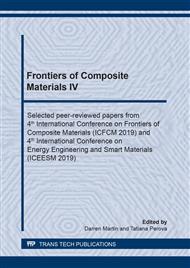p.136
p.143
p.149
p.155
p.161
p.168
p.174
p.183
p.189
Design of Nutrient Enriched Cement Paste with a Superabsorbent Polymer for the Bio-Based Self-Healing Concrete Development
Abstract:
The application of self-healing concrete for durability enhancement has become a widely studied topic in recent decades. This paper focuses on addition of a superabsorbent polymer (SAP) to bio-based self-healing concrete – a material in which cracks are autonomously sealed by incorporated microorganisms. As previously proposed, the SAP could serve as protection of the microorganisms against the harsh concrete environment and possibly to further enhance the materials autogenous sealing capacity. However, determining the applicable bio-based concrete mix design is not without obstacles as the immense absorption capacity of the SAP is, inter alia, closely related to ions present in the solution. This current study compares different mix designs of cement paste with the nutrients applied in the bio-based concrete and the addition of the SAP in dry and partially saturated states. The paste consistencies are determined, and a number of cement paste specimens is prepared to measure flexural and compressive strengths at 7 and 28 days from casting. The flowability results indicate that the SAP in a dry state absorbs slightly less than 25 g/g SAP of extra mixing water as the final consistency was similar to the reference paste. Further, the results showed that the partially saturated SAP is able to retain a great amount of the liquid throughout the mixing process. In this study, the strengths generally drop by still admissible 20% in the case of the dry SAP and extra water addition, whereas the replacement of mixing water by the partially saturated SAP results in a significant strength increase. These findings indicate that the dosage 0.5% SAP by cement weight in both of the states, dry and saturated, is applicable in the nutrient enriched cement paste from the mechanical perspective, although further work which would describe the absorption and retention mechanisms in depth is needed.
Info:
Periodical:
Pages:
161-167
Citation:
Online since:
June 2020
Authors:
Keywords:
Price:
Сopyright:
© 2020 Trans Tech Publications Ltd. All Rights Reserved
Share:
Citation:


